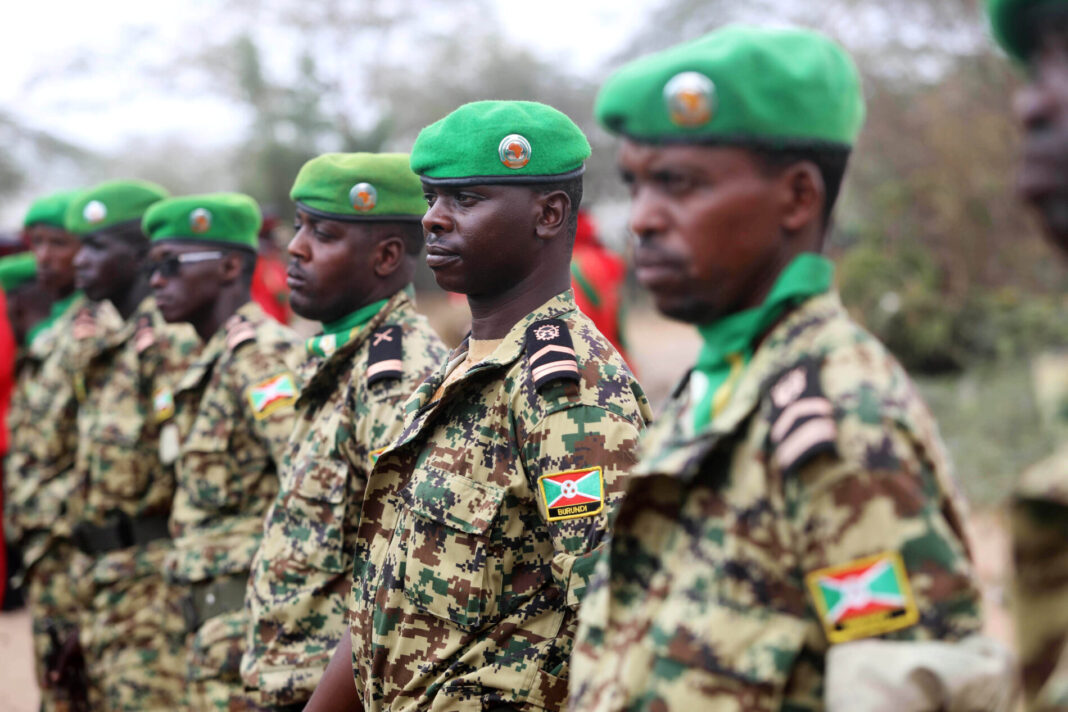The African Union Mission to Somalia is coming to an end. This reminds of the withdrawal of NATO in Afghanistan which resulted in the take-over of the Taliban. However, lessons can be learned from the Afghanistan operations
Tormented by war, Jihadists, hunger and political power struggles since decades, Somalia’s future seems more unsure than ever now that the African Union Mission to Somalia “AMISOM” is coming to an end. The peacekeeping mission with over 22.000 soldiers not only intended to assist in a governmental transition and provide humanitarian aid, but also to support the Somali government in the fight against the Islamic jihadist terrorist group al-Shabaab. The mission was initially meant for 6 months. But 6 months turned into 14 years. At the end of 2021 the mission was supposed to be completed. However, the United Nations Security Council delayed its mandate for 3 more months.
But what will happen after the 31st of March? There is no easy way out for AMISOM and the aftermath could determine whether the 14 years long operation was effective or not. In the beginning the mission successfully managed to secure big cities like Mogadishu against al-Shabaab and thus enabled new Somali institutions to grow. But al-Shabaab gained more and more power in the last few years, especially in rural areas of South and center Somalia.
Lessons learned from Afghanistan
Due to the unstable situation, the ending of AMISOM could entail a risk similar to the outcome of the withdrawal of NATO in Afghanistan.
NATO allies entered Afghanistan after the 9/11 attacks to put an end to the power of the Taliban. After nearly 20 years, the mission ended, resulting in a rapid takeover by the Taliban in August 2021. This not only led to the fall of the government but also to many restrictions of basic human rights, especially for women under the Taliban interpretation of Islamic law.
The question remains: What can be done differently in the future to avoid such results after withdrawals of peacekeeping missions globally? Last month, NATO’s Foreign Ministers assessed the mistakes from the engagement in Afghanistan. The conclusions imply a continuous assessment of strategic priorities, realistic goal setting, timely reports and extensive consultations. Furthermore, the capacity of each country to incorporate and apply the provided training must be recognized. Taking this reflective approach into account may help to avoid the same disastrous prospects for countries like Somalia. But is Somalia’s government stable enough?
Lost focus due to political insecurities
Considering the political situation in Somalia, the time does not necessarily seem right to pull back support. It could rather leave al-Shabaab with a window to act.
Just recently, Somalia’s president, known as Farmaajo, had suspended prime minister Roble because of corruption investigations. The feud between the president and prime minister led to political disputes within the Somali military. This split of political and military goals prevents a unified battle against al-Shabaab and a stable transition of national security.
However, there is hope: A new date for parliamentary elections has been set between the 15th January and 25th February 2022 latest, ending the continuous poll delays. The upcoming direct election will fulfill the President’s campaign promise for all citizens to have the right to vote its Parliament. This could lead to a new political legitimacy, which could solve political and military indifferences and quit distractions from fighting al-Shabaab.
Solutions after the withdrawal
Without doubt, the main focus must lay in a new legitimate, self-dependent government, which will fade out external support more and more over time. But until then, the need to strengthen the Somali forces through international actors after AMISOM seems inevitable. One solution could be a restructured mission of the African Union. However, four proposals of AU have already been rejected last June by the Somali government. This included a multidimensional mission in accordance to Chapter 7 of the UN Charter on threats to global peace and security, a joint-model of the AU und UN. Instead of only acting as a combat force, the suggestion involved rehabilitation of security, humanitarian and political issues. Going beyond security and combat stabilization would lead AMISOM back to the 2007 initially planned scope of activities.
Most likely, reasons for the rejection were missing financial funds and the criticism of AMISOM for acting too passive and disunited because of the diverse political interests of the five East African troop contributors, including Kenya and Uganda. Besides turning AMISOM into a regional standby force, another idea was a new mission of the United Nations. But expanding and further developing the existing peacekeeping missions located in Somalia such as UNSOM and EUTM would be more feasible than creating a new mission.
One thing remains sure: The priority of the time after AMISOM must include further international support for a stronger position of the government and the security forces. Nevertheless, Somalia’s sovereignty, territorial and political independence must be taken into account. President Mohammed targets a rapid transition of national security solely through the Somali army until the end of 2023. Without doubt, Somalia needs to be self-responsible someday without the intervention of external support. However, a quick withdrawal of AMISOM without a slow, well thought-through transition plan could become a high-risk.
A unified approach is essential to keep al-Shabaab outside the power lines. The upcoming elections and the decision about AMISOM may determine whether Somalia’s situation will improve or whether the withdrawal will lead to a catastrophic situation comparable to Afghanistan. The next 3 months will therefore determine the whole future of Somalia.




